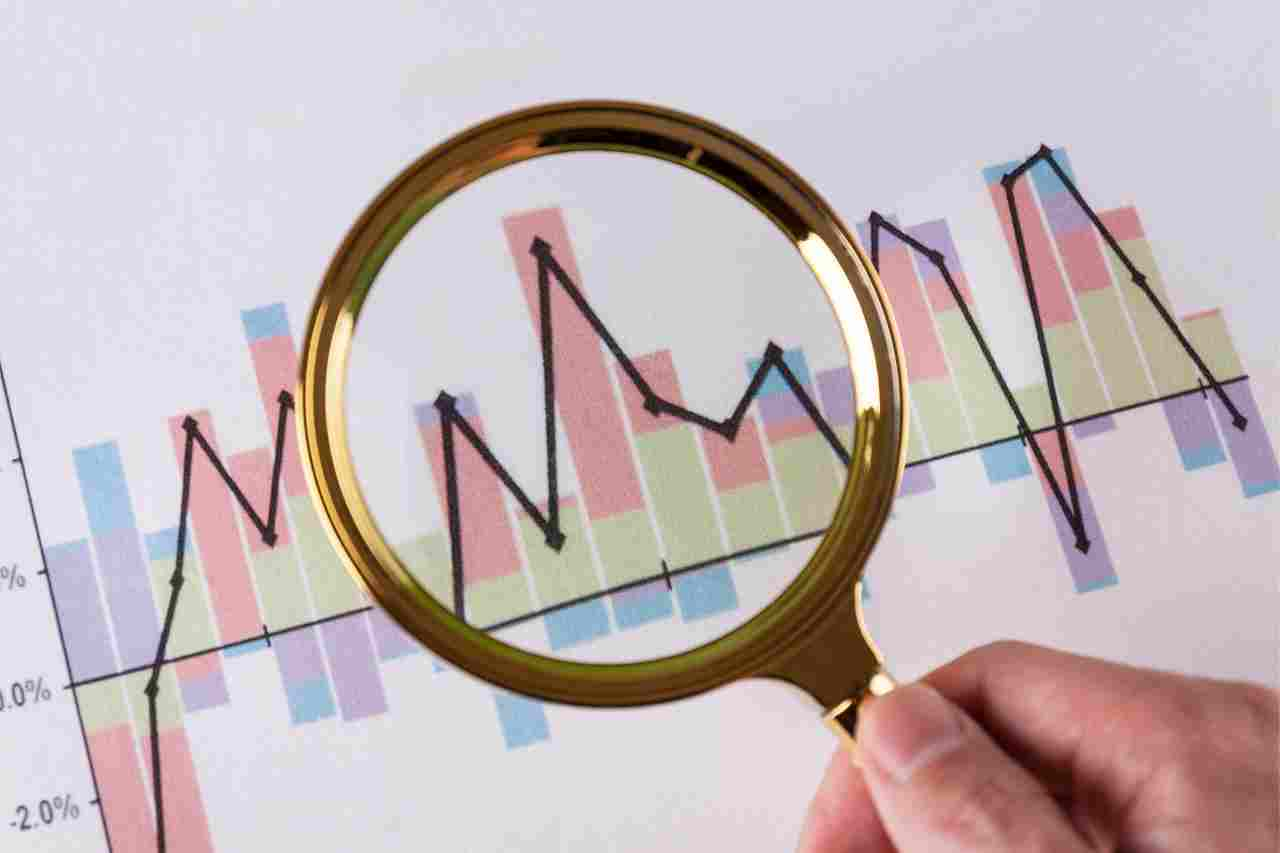Table of Contents
The stock market is a complex and dynamic system influenced by various factors, including economic indicators.
Economic indicators are statistics that provide information about the economy, such as inflation, gross domestic product (GDP), and employment rates.
These indicators can significantly impact the stock market, as investors and traders use them to make decisions about buying and selling stocks.
We will discuss the different types of economic indicators, such as leading, lagging, and coincident indicators, and how they impact stock market trading.
Additionally, we will examine some of the most important economic indicators, including interest rates, inflation, and GDP, and how they affect the stock market.
Finally, we will provide some tips and strategies for interpreting economic indicators and making informed trading decisions based on them.

Impact of Economic Indicators on Stock Market. Types of Economic Indicators
Economic indicators are classified into leading, lagging, and coincident indicators.
These indicators provide information about the economy’s present and potential future, which may aid traders and investors in selecting the right equities to purchase and sell.
Leading Indicators
Leading indicators are economic indicators that change before the economy as a whole changes.
They are used to predict economic changes and are often considered good predictors of future economic activity.
Leading indicators include consumer confidence, stock market performance, and housing starts.
Examples of leading indicators
Leading indicators are economic measures used to forecast economic changes before they happen. They are called leading indicators because they typically change before the economy does.
Here are explanations for each of the examples of leading indicators you mentioned:
Stock market indexes such as the S&P 500 and the NASDAQ Composite: These are measures of the stock market’s performance, which can provide insights into the economy’s overall health.
If stock market indexes are rising, it can mean that investors are optimistic about the future and that businesses are predicted to succeed.
Consumer confidence surveys: These polls gauge how hopeful or pessimistic consumers are regarding the state of the economy and their financial situation.
When consumer confidence is high, it suggests that people are more likely to spend money and that the economy is expected to grow.

Building permits and housing starts: These measures the number of new homes being built. When there is an increase in building permits and housing starts, it suggests a strong demand for housing, which is a positive sign for the economy.
New capital goods orders: These are equipment and machinery that companies need to produce goods and services.
When there is an increase in new orders for capital goods, it suggests that companies are planning to expand their operations and invest in new equipment, which is a positive sign for the economy.
Impact on the stock market
Changes in leading indicators can give traders and investors an idea of the economy’s future direction.
For example, if consumer confidence is high, people will likely spend more money, increasing business profits and higher stock prices.
Lagging Indicators
Lagging indicators are economic indicators that change after the economy as a whole change.
They are used to confirm trends that have already occurred and are often used to measure the economy’s overall health. Lagging indicators can include measures of unemployment, inflation, and GDP.
Examples of lagging indicators
Lagging indicators are economic measures that change after the economy as a whole has already begun to change. They are called lagging indicators because they typically take time to catch up to economic changes.
Here are explanations for each of the examples of lagging indicators you mentioned:
Unemployment rate: This is the percentage of the labor force that is currently unemployed. An indicator that lags is the unemployment rate because it tends to rise after the economy has already entered a recession or slowdown.

This is because businesses may be slower to lay off workers during an economic downturn than hiring new workers during an economic upturn.
Consumer price index (CPI): This measures the average change in prices of goods and services over time.
The CPI is a lagging indicator because it reflects past inflation or deflation and tends to change after the economy has already started to change.
Gross Domestic Product (GDP): The overall cost of all commodities and services produced in a nation within a certain time frame. Because it is frequently only reported after the period it covers has ended, GDP is a lagging indicator.
Corporate profits: This is the amount of money companies earn after deducting expenses. Corporate profits are a lagging indicator because they tend to rise or fall after the economy improves or declines.
Impact on the stock market
Changes in lagging indicators can give traders and investors an idea of the current state of the economy. For example, if the unemployment rate is high, it can indicate that businesses are struggling, which can lead to lower stock prices.
Coincident Indicators
Coincident indicators are economic indicators that change simultaneously as the economy changes.
They provide a snapshot of current economic conditions and can include retail sales, industrial production, and personal income measures.
Examples of coincident indicators:
Coincident indicators are economic measures that change at the same time as changes in the overall economy.
They are called coincident indicators because they are closely tied to the current state of the economy and are typically used to confirm economic trends.
Here are explanations for each of the examples of coincident indicators you mentioned:
Industrial production index: This gauges the economy’s industrial production, which includes mining, manufacturing, and utilities. The industrial production index is a coincident indicator because it tends to rise and fall along with the economy as a whole.
Retail sales: This measures the total amount of goods and services retailers sell. Retail sales are a coincident indicator because they reflect current consumer demand and are closely tied to the current state of the economy.
Personal income: This is the total income individuals earn from all sources, including wages, salaries, and investment income. Personal income is a coincident indicator because it reflects the current state of the labor market and overall economic conditions.

Impact on the stock market
Changes in coincident indicators can impact the stock market because they provide information about the current state of the economy, which can influence investor sentiment and expectations about future corporate earnings.
For example, if retail sales are high, it suggests that consumer demand is strong, which can lead investors to believe that companies in the retail sector are likely to report strong earnings.
This can cause investors to become more optimistic about the prospects of those companies and can lead to an increase in stock prices.
Similarly, suppose the industrial production index is rising. In that case, it can indicate that the economy’s manufacturing sector is growing, which can lead investors to believe that industrial companies are likely to report higher earnings in the future. This can also lead to a rise in stock prices for those companies.
Impact of Economic Indicators on Stock Market Trading
Economic indicators can have a significant impact on stock market trading. Economic indicators are used by traders and investors to learn more about the status of the economy now and in the future, which can help them make informed decisions about buying and selling stocks.
Here are some examples of how economic indicators can impact stock market trading:
Interest Rates
Interest rates are among the most important economic indicators affecting the stock market.
When interest rates rise, it can make borrowing more expensive, which can reduce consumer spending and slow down economic growth.
In contrast, when interest rates are low, it can encourage borrowing and spending, stimulating economic growth.
Impact on the stock market
Changes in interest rates have a big influence on the stock market because they alter borrowing costs and stock return on investment.
When interest rates rise, borrowing becomes more expensive, lowering consumer spending and reducing corporate profits.
This can cause investors to become more cautious about the economy, leading to a sell-off in the stock market and a decline in stock prices.
Conversely, borrowing becomes cheaper when interest rates are low, stimulating consumer spending and corporate investment.
This can lead to higher corporate profits and a more optimistic outlook for the economy, which can cause investors to become more bullish on the stock market and increase stock prices.
It’s important to note that changes in interest rates are often influenced by a range of factors, including monetary policy decisions by central banks, inflation expectations, and the overall health of the economy.
Therefore, while changes in interest rates can be an essential driver of stock market performance, it’s also crucial for investors to consider a range of other economic indicators and factors when making investment decisions.

Inflation
Inflation is another important economic indicator that can impact stock market trading. When inflation is high, it may lessen consumer spending power, which may result in decreased company sales and slower economic development. When inflation is low, it can stimulate consumer spending and economic growth.
Impact on the stock market
When inflation is high, it can lead to lower stock prices as investors become more cautious about the economy.
Conversely, low inflation can lead to higher stock prices as investors become more optimistic about the economy.
Gross Domestic Product (GDP)
GDP is a measure of the economy’s overall size and is considered one of the most important economic indicators.
When GDP grows, it can indicate that the economy is healthy and businesses are profitable.
When GDP is shrinking, it can indicate that the economy is in a recession and that businesses are struggling.
Impact on the stock market
When GDP is growing, it can lead to higher stock prices as investors become more optimistic about the economy.
Conversely, when GDP is shrinking, it can lead to lower stock prices as investors become more cautious about the economy.
Interpreting Economic Indicators for Stock Market Trading
Interpreting economic indicators is a critical component of stock market trading. Here are some tips to help traders and investors analyze economic indicators for stock market trading:
Understand the relationship between the economic indicator and the stock market.
Different economic indicators have varying degrees of impact on the stock market. For example, interest rates significantly affect the stock market, while other indicators, such as the consumer price index (CPI), have a more indirect effect.

Look for trends
Economic indicators need to provide a complete picture of the economy. It’s essential to look at trends in economic indicators over time to gain insights into the economy’s direction.
For example, if the GDP has been growing steadily over the past several quarters, it indicates a healthy economy.
Compare the indicator to market expectations.
Economic indicators are often released on a schedule, and market analysts will make predictions about what the number will be.
Comparing the actual indicator to market expectations can give traders and investors insights into whether the market will react positively or negatively.
Look for correlations between different economic indicators
Economic indicators are interconnected and can impact each other. For example, rising interest rates can decrease consumer spending, impacting the GDP.
Understanding these relationships can help traders and investors make more informed decisions.
Consider the overall market context.
Economic indicators can impact the stock market differently depending on the current market context.
For example, during a recession, a positive GDP growth rate may have a smaller impact on the stock market than during a period of economic expansion.
By understanding the relationship between economic indicators and the stock market, looking for trends, comparing actual indicators to market expectations, looking for correlations, and considering the overall market context, traders and investors can interpret economic indicators more effectively for stock market trading.

Conclusion
Economic indicators are essential tools for traders and investors to understand and interpret when making decisions about stock market trading.
Interest rates, inflation, and GDP are just a few examples of economic indicators that can significantly impact the stock market.
By understanding the relationships between these indicators and the stock market, looking for trends and correlations, and considering the overall market context, traders and investors may increase their chances of success by making better judgments.
However, it’s important to remember that economic indicators are just one piece of the puzzle. They should be used with other market analysis techniques to gain a more comprehensive understanding of the market.










